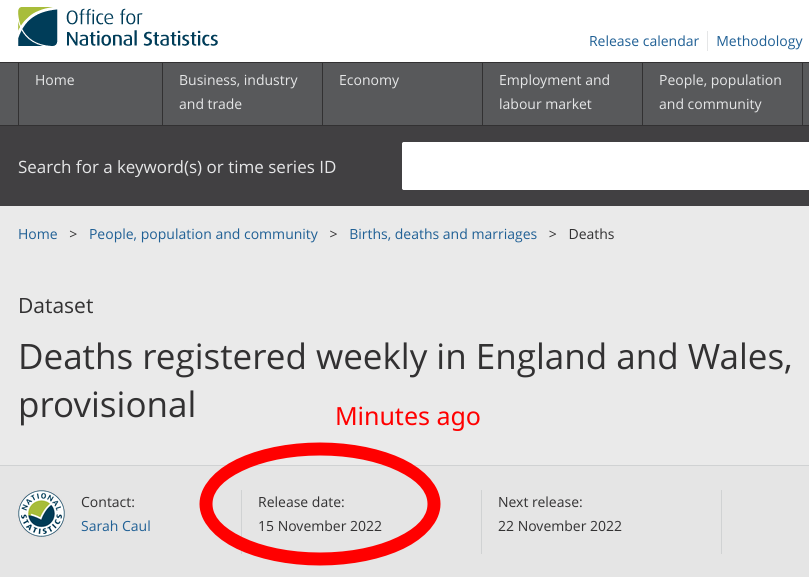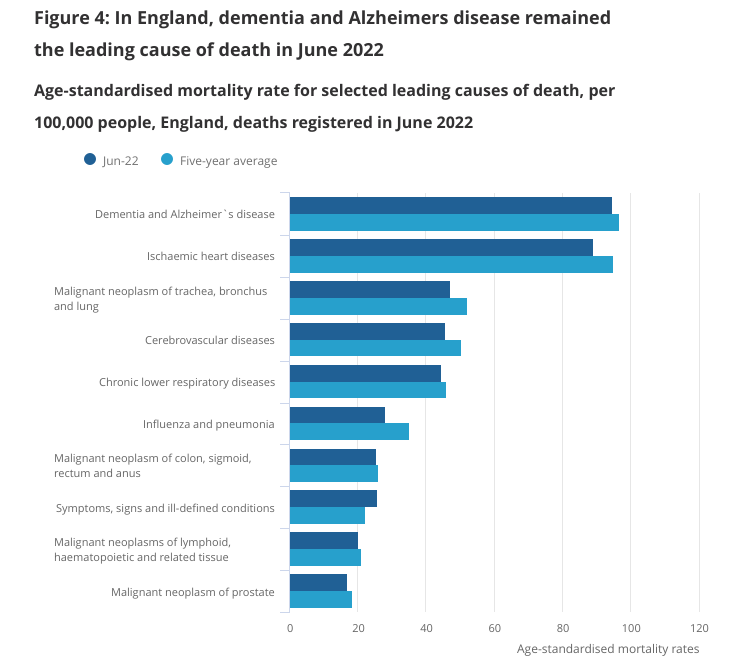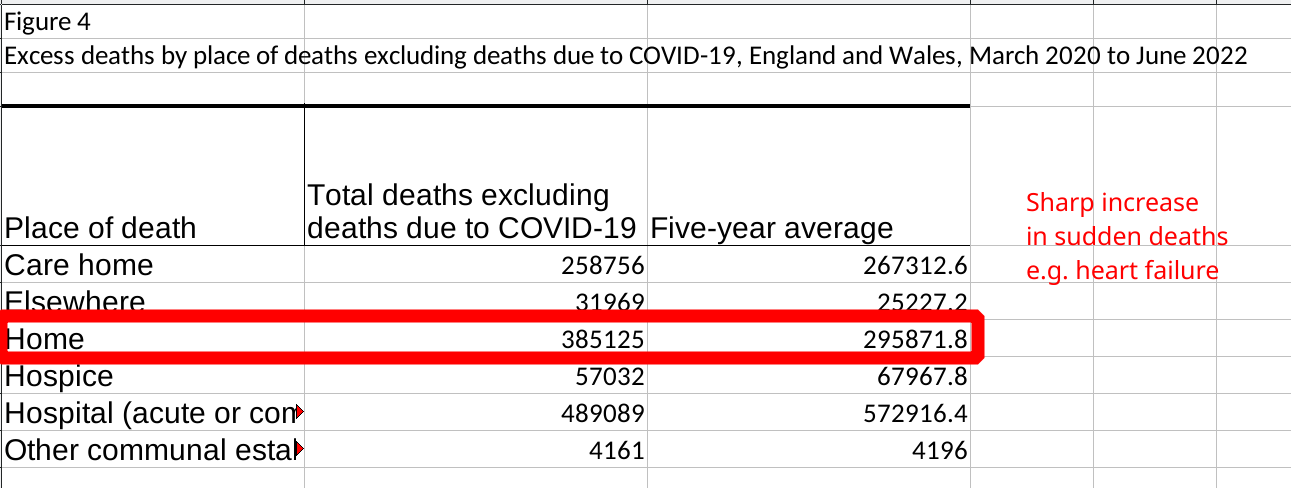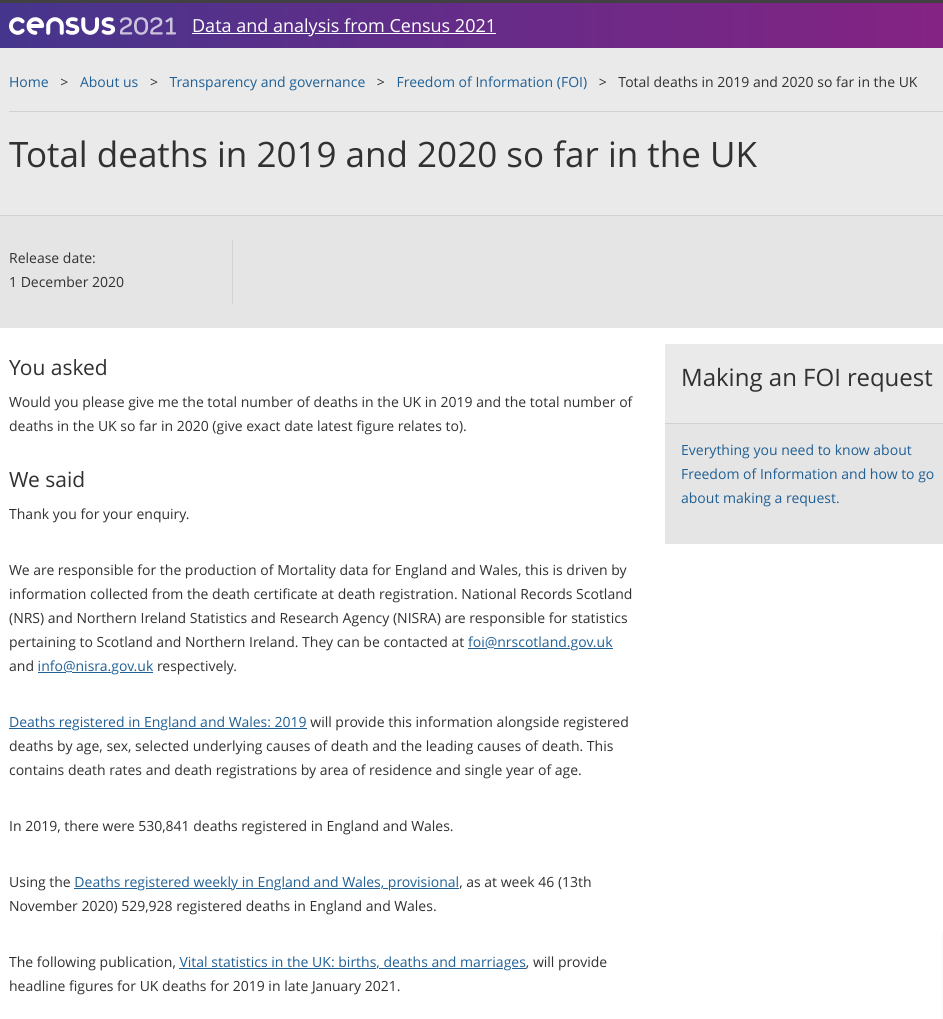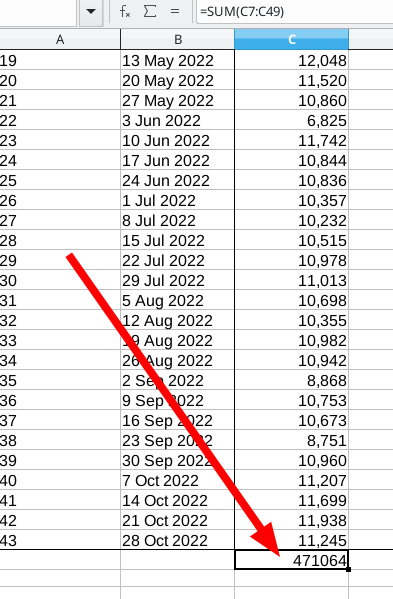ONS Official Data: Deaths Rose in All Age Groups
Data for week 44 (2022): England and Wales: Deaths Up 21% Compared to Pre-COVID-19 Levels, Based on Data Released Only Moments Ago
Comparing this year to 2019 (total number of deaths):
Age under 1: 47 this year, 45 in 2019
Ages 1 to 14: 16 this year, 19 in 2019
Ages 15 to 44: 333 this year, 289 in 2019 (15.2% increase)
Ages 45 to 64: 1395 this year, 1196 in 2019 (16.1% increase)
Ages 65 to 74: 1816 this year, 1663 in 2019 (9.2% increase)
Ages 75 to 84: 3448 this year, 2938 in 2019 (17.4% increase)
85 up: 4740 this year, 4014 in 2019 (18.1% increase)
Conclusion: it seems like all adults (15 or over) are affected almost equally. Deaths rose by about 15%. This isn’t based on some subsample or random sample; it’s the complete data, which us very large.






 Filed under:
Filed under: 